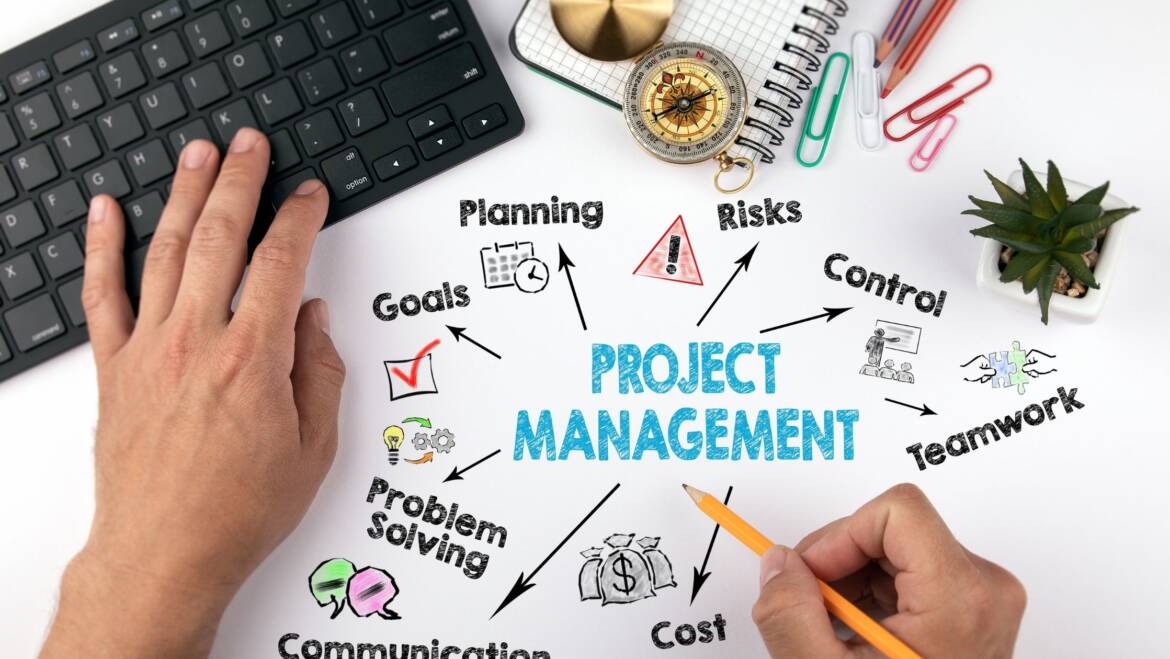Project Management Methodologies
Client ventures are the company’s lifeblood. It is essential to learn technical skills as a partner, developer, or marketer that helps you produce quality work for your customers. Yet, the larger and complicated the project gets, the more critical it become to handle them.
It’s quick to concentrate directly on developing the project outcomes and enhancing professional skills. However, if you have ever missed a deadline, failed to check up with a project stakeholder, or witnessed an interruption in the workflow, you will know that it also matters just as much to consumers to execute work on schedule and in a coordinated fashion. Hence, Project management will make all the difference between repetitive work between satisfied customers and dissatisfied customers with sluggish business development.
This is why we produced this guide. In it, we will guide you through the five fields of effective web design and growth project management.
- How to get the best out of methodologies for project management
- What Clients and we Handle
- How to harness repeatable templates’ strength
- How to handle the budget for the project and keep your customers satisfied
- After launch, how to close a project
Experienced collaborators and developers share their expertise and tactical experience about applying best practices in project management to the ventures in web design and production. To save time, create better relationships with your team and customers, and eventually expand your company.
Identify the real purpose of the customer’s initiative.
Without first having a good idea of what the customer actually needs to do, you never want to leap straight into a project.
Successful project management starts well before the job really begins, whether you are constructing a brand new web store, migrating your customer’s existing business to a new site. Also, it matters while developing a custom app that would provide unique features to their online store. Further, it encourage the user to know exactly what they want, but also why they want it. Therefore, you can plan the project around it to avoid being overwhelmed by needless functionality and functions because you realize your customer’s real purpose.
4 methodologies of project management for web design and creation
When you and your customer settle to your contract’s deliverables and schedule deadlines, keep the project on track by following a project management framework that fits the staff and project objectives. While there are several planning structures to pick from, four that have been seen to perform well in handling web design and growth projects will be highlighted.
-
Kanban
It’s easier to track job demands, coordinate workflows, schedule product roadmaps, set priorities, and goals, and quickly find bottlenecks in this Kanban board design from Asana.
Sticky note fans, take note: the Kanban form of our Project Management Service in Toronto follows an intensely visual, streamlined approach to handle project workflows. Kanban originated in Japanese car production and was later modified in software development field. Kanban supports all group contributors to acts of leadership, resulting in strong team cooperation.
- Agile
The Agile framework uses a sprint strategy where project deliverables get splitter into many sprints or’ cycles.’ You can use this framework for web design and construction projects. The framework involves a lot of iteration and coordination with a strong emphasis on flexibility and teamwork. In short, the approach helps both individual contributors and stakeholders to adapt rapidly developments. It proactively prepare users for improvements via an iterative preparation method instead of ensuring that the deliverable targets will continue as expected.
-
Waterfall
Waterfall Project Management Service in Toronto is a linear, sequential approach. Therefore, it is essential to complete activities within a project before the next one starts. As it was produced in the engineering and construction sectors, it is a more rigid approach to project management. Also, from the outset of the project, you must set down and consider all specifications. First, never emphasizes primarily on bigger deliverables, such as a complete website or app. Instead, small preparation entails more regular achievements, such as single-page templates, wireframes, and more, acknowledging small project timelines activities. Consequently, these smaller activities add up to more important goals. As a result, it allows you to use your success to re-forecast and rearrange your timetable.
-
Scrum
The Scrum structure is suitable for broader or more experienced teams. It can help teams perform more regularly, ensuring all partners to stay focused and on track during the development process.
Teams meet regularly in sprints of one to four weeks for a 15-minute meeting. Then, each member of the team answers three questions:
Yesterday, what did you do?
Today, what are you going to do?
Is your development being blocked by anything?
Instead of a quick status report, these questions help retain coordination across the process, awareness, and transparency. The “Scrum Master” is the project planner responsible for helping to remove any roadblocks for contributors. Typically, bigger teams can devote a teammate to this position.
Like & Follow us on Social Media


Live A Reply